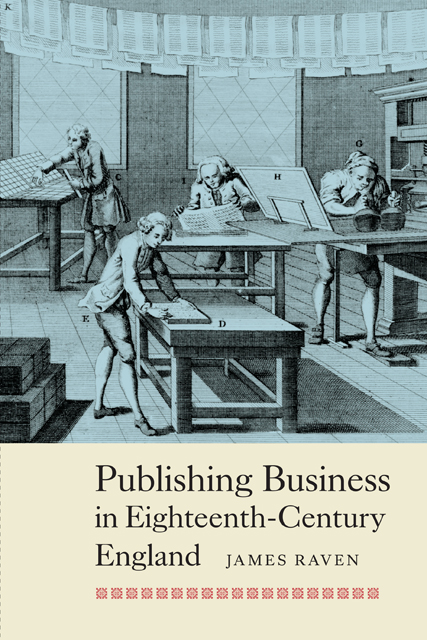Book contents
- Frontmatter
- Dedication
- Contents
- Acknowledgements
- Notes on Dates, Booksellers, Founts and Intaglio
- List of Abbreviations
- 1 The Mediation of the Press
- 2 England and the Uneven Economic Miracle
- 3 The Printed and the Printers
- 4 Serviced by Stationery and Printing
- 5 Printing and the City of London
- 6 Advertising
- 7 The Advertisers
- 8 Intelligence
- 9 Instruction and Guidance
- 10 Wider Discussion
- 11 Business, Publishing and the Gentleman Reader
- Conclusion
- Bibliography of Printed Sources
- Index
9 - Instruction and Guidance
Published online by Cambridge University Press: 28 February 2023
- Frontmatter
- Dedication
- Contents
- Acknowledgements
- Notes on Dates, Booksellers, Founts and Intaglio
- List of Abbreviations
- 1 The Mediation of the Press
- 2 England and the Uneven Economic Miracle
- 3 The Printed and the Printers
- 4 Serviced by Stationery and Printing
- 5 Printing and the City of London
- 6 Advertising
- 7 The Advertisers
- 8 Intelligence
- 9 Instruction and Guidance
- 10 Wider Discussion
- 11 Business, Publishing and the Gentleman Reader
- Conclusion
- Bibliography of Printed Sources
- Index
Summary
The subject of this chapter comes deliberately late in the organization of a book designed to reimagine the full compass of ‘business publishing’ and the mundane but critical handling of print that enabled and informed economic concerns. Most historical assessments of the contribution of print to society focus on the reading of books and understand the relationship between books and trade as a history of economic thought. Published works, however, were also responsible for far-reaching changes in the teaching and practice of commercial skills. From the late seventeenth century there was a very obvious increase in the number of small, usually one-man establishments devoted to commercial training, while the expansion in business houses and financial intermediaries had to be serviced by practical guides and commercial aides-memoires. Practical manuals contributed in great measure to the upturn in publications and to the increasing specialization of those engaged in writing for and about trade and industry. By mid-century, advertisements for general commercial schools and publications competed with those for specific courses of instruction in particular branches of trade or for short treatises on accountancy, broking or insurance.
Books and pamphlets intended for use in commerce included both those designed to educate and those designed to inform. There were many different types of publication within each category. Information required in trade and manufacturing was obviously not just of the daily news variety discussed in the preceding chapter. Many instructional works taught numeracy and accounting. Others provided specialist training for the young merchant or retailer. Informational works offered continuing guidance to the trader by way of memoranda, reckoners for calculations, updates of trading news and a variety of other services to the tradesman or his client.
As noted, throughout the eighteenth century the great majority of books sold in Britain continued to be published and printed in London. Provincial booksellers acted as agents for the London wholesale-booksellers, and very occasionally as joint printers or publishers. The great majority of books offering instruction on trade were certainly published in London until mid-century, although thereafter specialist guides were produced in specific localities. First Edinburgh and later Glasgow became noted centres for publishing books on accounting.
- Type
- Chapter
- Information
- Publishing Business in Eighteenth-Century England , pp. 180 - 205Publisher: Boydell & BrewerPrint publication year: 2014
- 1
- Cited by



